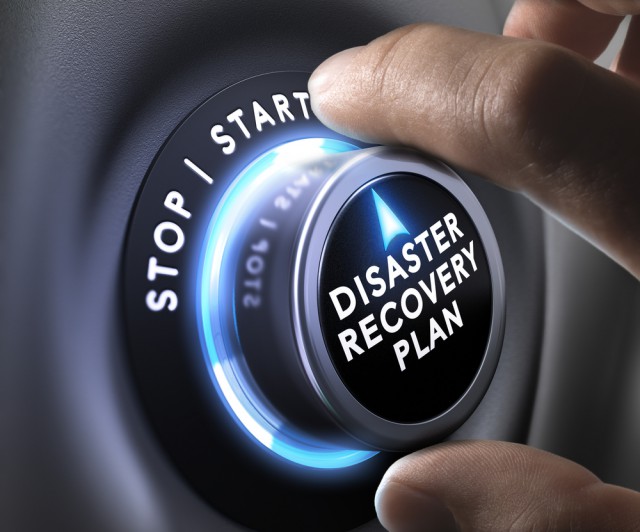When disaster strikes, having the proper business continuity and emergency preparedness technology can ensure enterprise resiliency within healthcare organizations

Even when a disaster or critical incident occurs, hospitals and healthcare organizations must be able to continue to provide assistance to existing patients, while also preparing for a surge of new ones. With many hospitals operating at nearly full capacity, even during periods of relative calm, business downtime of any duration will significantly impact both profitability and patient health outcomes; ensuring business continuity during any situation is critical, particularly in a times of limited resources.
While readiness for crises and critical incidents is essential for conducting resilient business operations in any industry, for healthcare providers, the stakes are higher. Threats like communicable disease outbreaks, weather disasters, and cyberattacks not only disrupt business-as-usual -- they also put individual lives and community well-being in jeopardy.
Unfortunately, the magnitude of risk faced by health systems has demonstrably increased in the last decade. At the end of 2019, a global pandemic, once a hypothetical exercise scenario, came to life. As climate change makes disasters more extreme, the impact of severe weather has increased, causing additional strain on healthcare resources during response and recovery efforts. Finally, sophisticated cyber criminals and hostile nation-state actors continue to pose a risk to our highly connected systems in ways that may create surges in healthcare needs.
According to a 2021 study, the average cost of a data breach across the globe in 2021 was $4.24 million, a 10 percent increase from the average cost in 2019. Worse still, the average cost of a breach in the US healthcare sector is more than double the global figure, with estimates in excess of $10 million per occurrence.
Fortunately, emergency preparedness and response principles are still relevant, and decades of research and practitioner-led input has created both business continuity frameworks and a technology ecosystem that can enable health system resilience through detection, situational awareness, response, and recovery.
Organizations that have both articulated and invested in business continuity planning are poised to reduce their costs of data breaches by half or more. To achieve mitigation of physical and cyber risks alike, organizations can use proven processes and purpose-built tools for critical incident management. The limiting reagent to organizational resilience is simply the leadership to prioritize business continuity.
First steps
Implementing a preparedness strategy will support an organization’s effective achievement of operational resilience. Key steps include:
- Identifying stakeholders. Stakeholders may include employees, leaders, suppliers, clients, or others. These individuals will be just as impacted as the business. Know who needs to receive communication should an unexpected event occur.
- Recognizing important services. Which services are highly critical within the organization? Plan out different risk and tolerance assessments for those services to ensure continuity of operations during an emergency. This can be in the form of checklists or thresholds that alert key stakeholders.
- Understanding critical economic functions. Identify how the discontinuance of a healthcare organization’s products, activities, services, or operations would impact the broader economy as well as the organization itself.
- Determining points of failure. With data from previous incidents, an organization can better understand the weak points in a particular strategy, making it easier to prioritize elements that need further improvement. Use after action reports as inputs to drive key areas to focus on in future work.
- Building a communication plan. Antiquated communication systems or redundant lines of communication can lead to errors that waste valuable time. Create a robust emergency management program to reduce these harmful communication gaps.
- Developing organizational training. Relevant employees must be sufficiently trained in crisis management. This will guarantee that response efforts best reflect the healthcare organization’s commitment to safety.
Expect the unexpected
Going hand in hand with an organization’s emergency response plan is the advanced technology that helps manage people, systems, and operations. A critical incident management platform will ensure a health system’s ability to mitigate risks while maintaining operational resilience. By promoting situational awareness and secure data sharing among key stakeholders, critical incident management platforms streamline daily operations to prepare for, respond to, and recover from serious incidents.
Leaders of healthcare institutions must ask themselves how prepared they are for the unexpected across the entire organization. Implementing the appropriate critical incident management platform can help a workforce become more engaged, focused, and flexible preparing them to maintain operations and prevent adverse events during any disruption or emergency. Leveraging a purpose-built solution for preparedness and response allows leaders to ensure that the members of their healthcare workforce are doing what they value most -- taking care of patients -- while still being knowledgeable about the organization’s response plan and their individual roles in achieving operational resilience.
Empowering the connections between stakeholders, processes, and operations with an advanced critical incident management platform enables healthcare organizations to carry out their emergency response plans effectively. With the right technology, healthcare providers and first responders can instantly launch important communications, including tactical alerts sent through voice, text, and email, to update anyone who needs critical information.
Ensuring operational resilience
In a world with elevated threats from cyber and natural incidents, healthcare providers must have the ability to remain operational both during and after an emergency. This is only possible if the infrastructure supporting a healthcare organization is readily available, functional, and sustained through regular exercise. Leaders who arm their teams with the technology and resources necessary to respond effectively to adverse events -- familiar and new -- will create beacons of resilience in their communities and help their organizations thrive.
Photo Credit: Olivier Le Moal/Shutterstock

Akshay Birla is Vice President and Chief Marketing Officer at Juvare, a leader in emergency management solutions for public and private organizations committed to optimizing their resilience strategies. He previously led Juvare’s Public Health and Healthcare vertical. Juvare’s solutions are used across a broad range of industries, including healthcare, aviation, education, and utilities, as well as state and local governments, federal agencies, and government defense organizations.